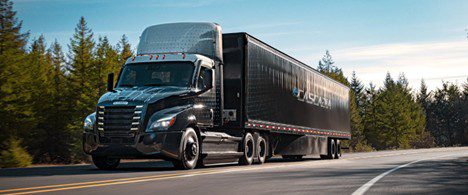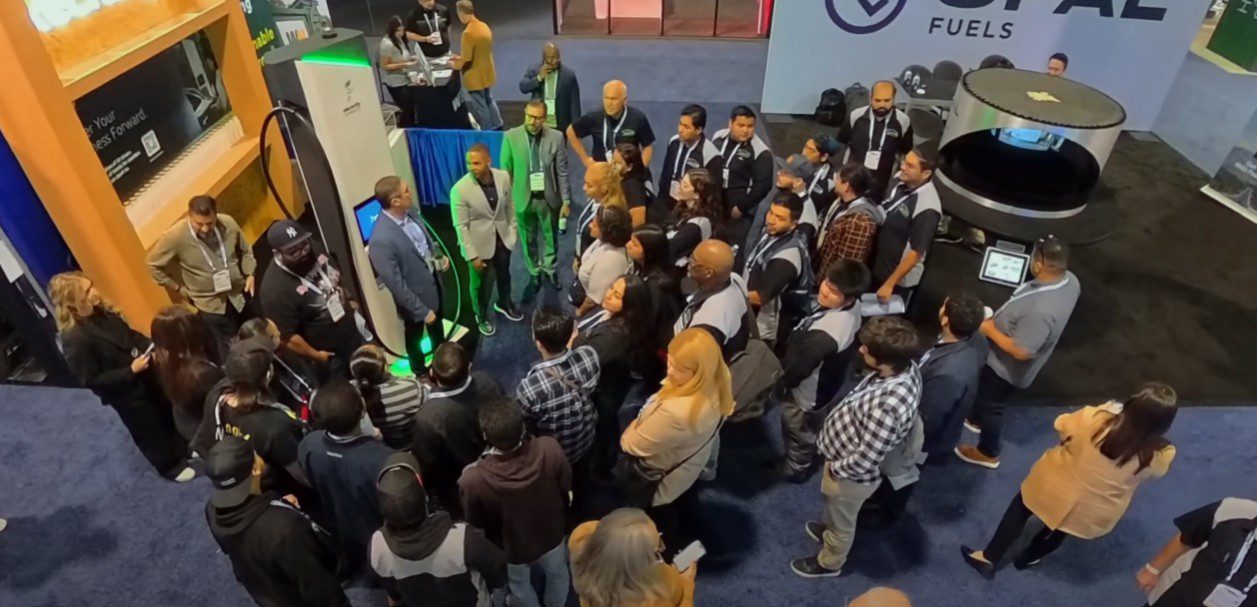
The shift to zero-emission freight is transforming how goods move across California—but it’s also raising important questions about equity, infrastructure, and community health. To better understand these dynamics, the Coalition for Clean Air has been working closely with local community-based organizations to hear directly from those most affected by freight pollution. As part of this effort, we interviewed the Center for Community Action and Environmental Justice (CCAEJ), a Jurupa Valley–based nonprofit with deep roots in environmental justice advocacy. Their insights into the Joint Electric Truck Scaling Initiative (JETSI) provide a vital perspective on how this transition impacts frontline communities and what’s needed to ensure a truly equitable clean freight future. At the CCAEJ, their mission is to inspire social change and address the root causes of environmental injustice in the communities we serve.
- What is the impact of battery electric trucks on air quality?
The deployment of battery electric trucks through the JETSI project has the potential to significantly improve air quality for frontline communities that have long been overburdened by air pollution from freight logistics. By reducing emissions from traditional diesel trucks, we can help alleviate the health risks faced by low-income communities of color and immigrant families who live in proximity to heavy traffic routes and freight hubs.
- Can you please identify key environmental justice concerns?
As charging and electric truck infrastructure expands, we must address several critical environmental justice concerns. First, we need to ensure equitable access to clean air and public health benefits for communities historically exposed to hazardous air pollutants. Infrastructure development should prioritize low-income neighborhoods that have faced systemic neglect, ensuring that they are not further marginalized by the expansion of charging stations and electric truck facilities. In addition, partnerships need to be established to also address the road infrastructure and land use challenges our communities are facing.
- How can we ensure health improvements for low-income neighborhoods?
The South Coast Air Quality Management District (SCAQMD) and JETSI can ensure that low-income neighborhoods experience genuine health and quality-of-life improvements by adopting community-driven strategies that engage residents in the planning processes. This may include participatory decision-making frameworks that advocate for the distribution of resources to the most impacted areas, along with monitoring and evaluation mechanisms to ensure accountability.
- How can we prevent environmental injustice?
To avoid exacerbating environmental injustices, we recommend implementing robust safeguards that limit the clustering of zero-emission infrastructure in already overburdened areas. Tools such as environmental impact assessments, community health assessments, and equitable siting policies should be utilized to ensure fair distribution of infrastructure across diverse neighborhoods.
- What do you recommend regarding community outreach and involvement?
Effective community outreach is crucial for the success of the JETSI deployment process. While some outreach efforts have been made, there remains a critical need for genuine engagement with local residents. Effective strategies include multilingual communication, inclusive community meetings, and partnerships with local organizations to ensure that stakeholders can voice their concerns and aspirations.
- How can freight and logistics partners effectively collaborate with community-based organizations to ensure local support and long-term success?
Local governments and agencies like SCAQMD must actively collaborate with community-based organizations to foster accountability and transparency in zero-emission freight planning. Establishing regular collaborative forums and advisory panels that include community representatives will help ensure that local voices inform the development of policies and infrastructure.
- How can the clean freight transition create workforce development opportunities for residents near freight corridors?
JETSI must create accessible workforce development opportunities for residents living near port and warehouse corridors. Training programs should focus on equipping historically marginalized populations with the skills necessary to thrive in the green economy. Partnerships with local educational institutions and vocational training centers can facilitate access to these opportunities.
- How can charging station placement be optimized to support efficient freight operations while benefiting surrounding communities?
The placement of charging stations must be strategically planned to benefit disadvantaged communities rather than burden them. A needs assessment involving community input can help identify optimal locations that serve both the logistics industry and the surrounding neighborhoods, ensuring that benefits are shared equitably.
- What data and reporting requirements are needed to ensure transparency and accountability in electric truck deployment?
To track the environmental and health impacts of electric truck deployments, comprehensive data collection and reporting requirements must be established. Regularly updated community impact assessments, health studies, and air quality monitoring should be made publicly accessible to ensure transparency and foster community trust.
- What is the most effective way to ensure a clean freight transition that delivers equitable benefits to frontline communities?
If I could make one recommendation to SCAQMD and its JETSI partners, it would be to implement a community benefits agreement that outlines specific commitments to environmental justice, health improvements, and economic opportunities for the impacted communities along the Long Beach to Inland Empire corridor. Such an agreement would ensure that the voices of those most affected are prioritized throughout the clean freight transition process.
Thank you for considering these perspectives. We hope to continue working together to create a healthier and more equitable future for our communities.
Powering the Future: Freightliner eCascadia Redefines Electric Trucking

Key Specs at a Glance
Powertrain & Performance: Available with single- or tandem-drive electric Detroit eAxles delivering 320 hp to 470 hp.
Battery & Range: Choose between a 291 kWh (single-drive) or 438 kWh (tandem-drive) battery, offering typical ranges of 155, 220, or 230 miles depending on configuration.
Charging Speed: Charges from 0 to 80% in roughly 90 minutes—perfect for quick turnaround in short-haul operations.
Load Capacity: Handles up to 82,000 lbs gross combination weight (tandem-drive), or up to 65,000 lbs with single drive—on par with diesel counterparts.
Intelligent Safety Features
Equipped with the latest Detroit Assurance® systems, the eCascadia includes industry-first Active Side Guard Assist—designed to help prevent right-turn collisions with cyclists or pedestrians in urban environments.
Built for the Real World
Designed especially for short-haul, last-mile, and regional logistics, the eCascadia excels when paired with depot-based charging infrastructure. It’s already being deployed in real operations—for instance, at Daimler Truck North America’s Detroit Logistics Center, where it regularly completes ~220-mile routes for inbound component delivery.
Why It Matters
Eco-Forward: A step toward cleaner air and quieter streets with zero tailpipe emissions.
Cost Smart: Electricity costs less per mile than diesel, and long-term ownership savings are boosted by lower maintenance and available incentives.
Driver Comfort: Smooth electric torque, reduced noise and vibration, and advanced safety systems make for a more comfortable—and safer—ride.
Learn more at: https://www.freightliner.com/trucks/ecascadia/
To receive updates from the Coalition for Clean Air, subscribe here.


